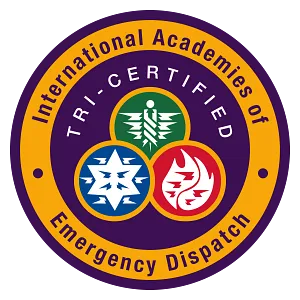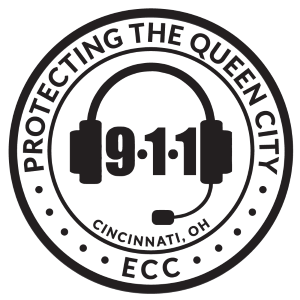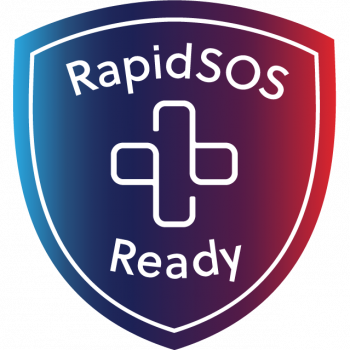About ECC
 The Cincinnati Emergency Communications Center (ECC) answers and processes emergency 911 and non-emergency calls for assistance from the public, and dispatches or notifies the appropriate public safety first responders. ECC is also the 311 call center for the City of Cincinnati, connecting people to all city services, 24/7.
The Cincinnati Emergency Communications Center (ECC) answers and processes emergency 911 and non-emergency calls for assistance from the public, and dispatches or notifies the appropriate public safety first responders. ECC is also the 311 call center for the City of Cincinnati, connecting people to all city services, 24/7.
When you call 911 in the United States, your call is answered by a local Public Safety Answering Point (PSAP). In the City of Cincinnati, that PSAP is the city's ECC. Whether you need police, fire or medical help, the ECC's call-takers are the group of people that will get that process started. They are the first first responders, and often provide life-saving instruction by telephone while help is on the way.
 ECC's 911 call-takers are certified by the International Academies of Emergency Dispatch (IAED) to use the Priority Dispatch System as an EFD, EMD, and EPD. Our protocol-based call-taking system assists the call-taker with gathering information and providing life-saving pre-arrival instructions for our callers. Our 911 staff are "tri-certified" because we use a protocol-based approach to handle all fire, medical, and police calls. By doing so, we exceed standards set for 911 centers in Ohio, and have committed to offer a higher level of service to all of our callers.
ECC's 911 call-takers are certified by the International Academies of Emergency Dispatch (IAED) to use the Priority Dispatch System as an EFD, EMD, and EPD. Our protocol-based call-taking system assists the call-taker with gathering information and providing life-saving pre-arrival instructions for our callers. Our 911 staff are "tri-certified" because we use a protocol-based approach to handle all fire, medical, and police calls. By doing so, we exceed standards set for 911 centers in Ohio, and have committed to offer a higher level of service to all of our callers.
In addition to the call-taking function, the ECC serves at the dispatch center for the Cincinnati Police Department. In this role, the ECC is responsible for the safety of police officers, acting as their link to the resources they need, keeping track of their status and location, and coordinating the assignment of officers to new incidents.
 In a typical year, ECC call-takers answer over 350,000 calls on 911 lines and over 400,000 calls on non-emergency lines. Those calls result in approximately 300,000 police incidents that are dispatched by the ECC to Cincinnati Police Department officers. The ECC call-takers also process 16,000 fire incidents and 60,000 emergency medical incidents each year that are then routed to the Cincinnati Fire Department (CFD) for dispatch. The Fire Department manages and operates its own dispatching function, which is separate from but a close partner of the ECC.
In a typical year, ECC call-takers answer over 350,000 calls on 911 lines and over 400,000 calls on non-emergency lines. Those calls result in approximately 300,000 police incidents that are dispatched by the ECC to Cincinnati Police Department officers. The ECC call-takers also process 16,000 fire incidents and 60,000 emergency medical incidents each year that are then routed to the Cincinnati Fire Department (CFD) for dispatch. The Fire Department manages and operates its own dispatching function, which is separate from but a close partner of the ECC.
Interested in the data? Transparency is a cornerstone of our philosophy. We believe in sharing data about our performance openly and consistently. By doing so, we aim to not only showcase our achievements but also demonstrate our commitment to accountability and improvement. Our approach involves leveraging data to identify areas of improvement and implementing strategies to enhance our performance continually. Through meticulous analysis and a proactive mindset, we strive to raise the bar in 911 and 311 communication services.
Mission Statement
As a 24/7 connection to the City of Cincinnati, the Emergency Communications Center answers calls for help, dispatches resources, and supports community safety programs, with focus on mission readiness and continuous improvement.
History
The Cincinnati ECC was once known as "Station X" and began radio dispatching the city's first responders in 1931. Over the next decade, Station X provided radio dispatching for thirty-four communities in six counties, but today we serve the City of Cincinnati exclusively. A single number to dial and reach emergency services, 911, became available in Cincinnati in 1988. Visit the ECC History page to learn more.
Beginning in 2019, the ECC began accepting 911 "calls" by text (SMS) message to better serve those with hearing or speech impairments. Text-to-911 is also an important resource for someone in a situation that might not otherwise have the ability to safely call us using their voice, such as the victim of domestic abuse. Learn more about Text-to-911 in Cincinnati.
What We Do
 Inside the ECC, staff are on the job 24 hours a day protecting the Queen City as the lifeline between the public and our first responders. The center is split into two primary functions: call-taking, and dispatching. At the heart of what we do, from a technology perspective, is our Computer-Aided Dispatch (CAD) system - a complex software system we use to enter and prioritize incidents, track first responders, and assign resources.
Inside the ECC, staff are on the job 24 hours a day protecting the Queen City as the lifeline between the public and our first responders. The center is split into two primary functions: call-taking, and dispatching. At the heart of what we do, from a technology perspective, is our Computer-Aided Dispatch (CAD) system - a complex software system we use to enter and prioritize incidents, track first responders, and assign resources.
Our call-takers answer emergency calls to 911 as well as non-emergency calls to 311 and 513-765-1212. The ECC's telephone system prioritizes 911 calls over calls to our non-emergency line, which is why its both important to call 911 if you have an emergency, and important to otherwise keep 911 available for those who do. Learn more about calling 911.
Emergency callers are thoroughly interviewed to determine the location of the incident, what is happening, and what resources are needed. Sometimes, callers become frustrated, thinking that the questions are delaying the help they need. In reality, as the call-taker conducts their interview and feeds information to the CAD system, an ECC dispatcher is often using that information in CAD to send first responders and provide updates as they travel.
ECC's dispatchers communicate with the city's police officers by radio and through a computer system. As call-takers gather information by telephone, dispatchers are directing officers at the Cincinnati Police Department to the incident and providing them the support that they need to respond safely. Voice communication happens on the city's two-way radio system, and data is available to police officers on in-car computers.
Technology at ECC
The City of Cincinnati strives to equip its Emergency Communications Center with state of the art technology, so that we are always ready to help. A few highlights:
- Computer-Aided Dispatch (CAD) System
The CAD system is utilized by 911 operators and dispatchers to prioritize and record incident calls, identify the status and location of responders in the field, and effectively dispatch responder personnel. The CAD is at the heart of what we do, and is a central piece that connects may of our secondary technology systems. For instance, computers in police and fire vehicles (we call these "MDCs" or Mobile Data Computers) are a technology system of their own, but they connect to and are fed data from the ECC's CAD. When a dispatcher sends a first responder to an emergency, the incident details in the CAD are displayed for first responders on their MDC. - Next-Generation 911 (NG911) Ready Telephone System
Because most 911 systems were originally built using analog rather than digital technologies, public safety answering points (PSAPs) across the country need to be upgraded to a digital or Internet Protocol (IP)-based 911 system, commonly referred to as Next Generation 911 (NG911). The City of Cincinnati operates a state-of-the-art, IP-based, NG911-ready telephone system to process calls at the ECC. Today, this system accepts analog calls from the telephone company and converts them to IP, but it stands ready to accept IP calls as soon as telephone companies and the State of Ohio make NG911 services available. - Automated Secure Alarm Protocol (ASAP)
 A fire can double in size every 30 seconds causing everything in a room to burn in as little as three minutes. Traditionally, if your fire alarm system was monitored by an alarm company, the alarm company would call ECC by telephone to report the alarm. Details about the emergency, and the location, were provided verbally over the telephone. A 911 operator needed to enter the information they were being told to create a record to be sent to a dispatcher. This takes up valuable time. But what if the the alarm company could electronically notify a dispatcher in seconds, to get fire trucks racing to the emergency right away?
A fire can double in size every 30 seconds causing everything in a room to burn in as little as three minutes. Traditionally, if your fire alarm system was monitored by an alarm company, the alarm company would call ECC by telephone to report the alarm. Details about the emergency, and the location, were provided verbally over the telephone. A 911 operator needed to enter the information they were being told to create a record to be sent to a dispatcher. This takes up valuable time. But what if the the alarm company could electronically notify a dispatcher in seconds, to get fire trucks racing to the emergency right away?
The Automated Secure Alarm Protocol (ASAP) is a public-private partnership designed to allow for emergency electronic signals from alarm monitoring companies to Emergency Communications Centers across the nation. Cincinnati adopted ASAP and integrated it with its CAD system in 2019. Since then, participating alarm monitoring companies have been able to send fire, medical, burglar and hold-up alarms electronically to Cincinnati's dispatchers, which in some cases cuts minutes from the police, fire and EMS response time. ASAP utilizes ANSI standard protocols developed cooperatively by the Association of Public-Safety Communications Officials (APCO) and The Monitoring Association (TMA). With ASAP, critical life safety signals and accurate information are processed in seconds, not minutes, through the NLETS system of state-to-state ECC communication, insuring that complete and accurate information is transmitted to the ECC, every time. - Caller Location Query (CLQ)
When you call 911 from a wireless phone, we can typically see an approximate caller GPS location based on cellular carrier location data or RapidSOS information. However, when someone calls the ECC on a non-emergency line, the call does not include any location data. Cincinnati added a feature to its CAD system in 2019 called Caller Location Query (CLQ). Using CLQ, a call-taker can send a text message to their caller asking them to share their location, directly from that phone’s location services—even without a 911 call. - RapidSOS Platform
 Cincinnati ECC has multiple integrations with the RapidSOS Platform, which often provides our 911 operators with an additional piece of location data on calls from wireless phones. The RapidSOS Platform provides ECCs with supplemental device-based location information in addition to the "Phase 2" location information provided by cellular carriers on most emergency calls. Citizens often ask, “Why can Uber find me but 911 can’t?” Apps like Uber locate users based on device-based location, whereas 911 today still uses a network-centric approach that often falls back to cell-tower triangulation when a GPS fix cannot be obtained. Device-based location, available to ECC through the RapidSOS Platform, combines all of the sensors on a smartphone. In comparative location testing, device-based location has shown to be faster and more accurate than traditional network-based location mechanisms.
Cincinnati ECC has multiple integrations with the RapidSOS Platform, which often provides our 911 operators with an additional piece of location data on calls from wireless phones. The RapidSOS Platform provides ECCs with supplemental device-based location information in addition to the "Phase 2" location information provided by cellular carriers on most emergency calls. Citizens often ask, “Why can Uber find me but 911 can’t?” Apps like Uber locate users based on device-based location, whereas 911 today still uses a network-centric approach that often falls back to cell-tower triangulation when a GPS fix cannot be obtained. Device-based location, available to ECC through the RapidSOS Platform, combines all of the sensors on a smartphone. In comparative location testing, device-based location has shown to be faster and more accurate than traditional network-based location mechanisms. - ShotSpotter Gunshot Detection System
 Cincinnati ECC is directly integrated with the Cincinnati Police Department's ShotSpotter gunshot detection system. Within seconds of a gun being fired in any of Cincinnati's gunshot detection zones, ECC police dispatchers are alerted to the location and number of shots fired. A pending incident is automatically created and no time is wasted in alerting police officers to the needed response.
Cincinnati ECC is directly integrated with the Cincinnati Police Department's ShotSpotter gunshot detection system. Within seconds of a gun being fired in any of Cincinnati's gunshot detection zones, ECC police dispatchers are alerted to the location and number of shots fired. A pending incident is automatically created and no time is wasted in alerting police officers to the needed response. - Smart911 Safety Profiles
 Despite advances in 911 location technology, if you call for help from a mobile phone, we may only have a general sense of where to send help. The approximate caller GPS location can get responders to the appropriate neighborhood or street, but we're never provided with an exact address, floor, or apartment number. We rely on callers being able to tells us exactly where they need help. But what if you can't? That's how a Smart911 profile could save your life. In 2018, Cincinnati adopted Smart911 technology to put more information about our callers at the fingertips of 911 operators. By creating a Smart911 safety profile for you and the other members of your household, you could be providing lifesaving information to our 911 operators during a future emergency call. Your information is kept private and secure, and only accessible to us during an emergency call. Learn more.
Despite advances in 911 location technology, if you call for help from a mobile phone, we may only have a general sense of where to send help. The approximate caller GPS location can get responders to the appropriate neighborhood or street, but we're never provided with an exact address, floor, or apartment number. We rely on callers being able to tells us exactly where they need help. But what if you can't? That's how a Smart911 profile could save your life. In 2018, Cincinnati adopted Smart911 technology to put more information about our callers at the fingertips of 911 operators. By creating a Smart911 safety profile for you and the other members of your household, you could be providing lifesaving information to our 911 operators during a future emergency call. Your information is kept private and secure, and only accessible to us during an emergency call. Learn more. - Text-to-911
Help from 911 is available by text message in Cincinnati. If you need help but can’t safely speak on the phone or are unable to speak, use a mobile phone to send a text message to 911. Learn more.
Priority Goals
The Priority Goals of the ECC are:
- Professional, accurate and diligent service to citizens
- First responder safety and support
- Teamwork, integrity, and reliability in the workplace
- Fair, honest, and reasonable leadership
